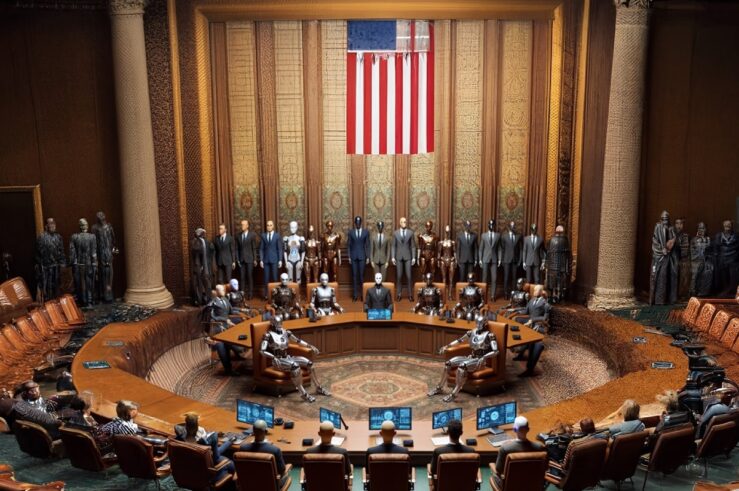This article is a part of the Unfair Methods of Competition Symposium symposium.
The FTC has long been on a quest to find the elusive species of conduct that Section 5 alone can tackle. A series of early Supreme Court cases interpreting the FTC Act – the most recent and widely cited of which is more than forty years old (FTC v. Sperry & Hutchinson Co., 405 U.S. 233 (1972)) –appeared to grant the FTC wide ranging powers to condemn methods of competition as “unfair.”[1] A series of judicial setbacks in the 1980s and early 1990s, however, scaled back Section 5’s domain.[2]
Since 1992, the FTC has continued to define Section 5’s reach internally – through settlements primarily involving two classes of conduct: so-called “invitations to collude” (ITC);[3] and breaches of agreements to disclose or to license standard-essential patents (SEPs).[4] Similar in spirit to ITCs, the Commission has also alleged pure Section 5 violations in cases involving sharing of competitively sensitive information.[5]
In addition to these lines of cases, the FTC has used Section 5 in two additional matters: the “CD MAP” cases, involving the parallel adoption by major record companies of “minimum advertised price” restrictions; and the suit against Intel for engaging in exclusionary conduct, including deception and certain pricing practices.
Absent external appellate review, however, it remains unclear whether Congress intended for these classes of conduct to be illegal as “unfair methods of competition.” Because settlement with the FTC will be preferable to litigation in a wide array of circumstances, what is considered illegal under Section 5 largely has become whatever at least three Commissioners can agree on. Accordingly, there is still a relatively large zone in which the FTC can develop this quasi Section 5 common law with little fear of triggering litigation, and the concomitant specter of judicial scrutiny.
The recent Google investigation provides some evidence as to just how large this zone of discretion may be. Although the Commission eventually decided to close its investigation into Google’s search practices – and was able to extract informal concessions from Google related to “scraping” and failures to facilitate “multihoming” – that the Commission would entertain a case premised on such conduct hints at a willingness to make arguments that clear Sherman Act precedent involving duties to aid rivals does not apply to the Section 5 actions, or that misappropriation can serve as the basis for a Section 5 theory. The Commission’s settlement with Google concerning breaches of commitments to license SEPs on FRAND terms, moreover, continued its application of antitrust and consumer protection law to contractual disputes between sophisticated businesses.
Parsing the statements in Google suggest at least four directions in which at least one commissioner was willing to expand Section 5 beyond the Sherman Act: duties to aid rivals, misappropriation, failure to disclose the relationship between data collection and market power, and breach of an agreement to license SEPs on FRAND terms. Further, in two instances, at least one commissioner additionally was willing to declare the same conduct an unfair act or practice. This is far from a coherent framework for Section 5.
The FTC’s discretion under Section 5 potentially comes at a steep price. First, it creates uncertainty. If businesses are unsure about where the line between legal an illegal behavior is drawn, they rationally will take too much care to avoid violating the law, which in antitrust can mean competing less aggressively. Second, the more discretion the FTC enjoys to condemn a practice as an unfair method of competition, the more competition will be channeled from the marketplace to 600 Pennsylvania Avenue. Although this may be a good development for economists and attorneys, it is bad for consumers.
The FTC could go a long way toward solving this problem if it were to take a cue from the history of its consumer protection program. The FTC’s overreach in the 1970s earned it the moniker “national nanny,” nearly shut the agency down. As part of a program to instill public – and more importantly Congressional – trust, the FTC adopted a series of binding policy statements that made consumer harm the touchstone of its authority to challenge “unfair or deceptive acts or practices” (UDAP authority).
A similar effort at self-restraint that limits the FTC’s UMC authority could help reduce uncertainty and rent seeking. Both Commissioners Ohlhausen and Wright should be commended on their impressive efforts to start this discussion. In my first post, however, I’d like to discuss a more dramatic path that neither has addressed: confining Section 5 to the Sherman Act.
In many ways the search for Section 5’s domain beyond the Sherman Act is a solution in search of a problem. There is certainly no consensus that the Sherman Act – even after some recent limitations imposed by cases like Twombly, Trinko, and Credit Suisse – is no longer fit for the task of policing anticompetitive conduct. It may well be that the FTC is trying to sell a product that nobody needs. Consequently, the costs of abandoning an expansive Section 5 may be small; with the exceptions of ITCs and information sharing involving small firms, the rest of the FTC’s Section 5 portfolio also can be reached under existing Sherman Act theories (albeit with more difficulty), or handled through other bodies of law or self-regulation.
For example, under the D.C. Circuit’s decision in Rambus, Section 2 is available for cases involving deception at the time of the standard adoption that materially affected the choice of standard.[6] Accordingly, a Section 2 case could be made out if the Commission could show that the defendant either concealed an SEP or if a FRAND commitment was made in bad faith and affected the choice of standard. Even if deception cannot be show, breaches of FRAND commitments involving SEPs that result in hold-up necessarily involve legal review; the court (or ITC) must decide whether to grant the SEP holder’s request for an injunction (or an exclusion order), and the alleged infringer has opportunities to raise a variety of contract and patent law objections. Likewise, bundling, predatory pricing, and deception claims like those in Intel are clearly cognizable under Sherman Section 2 (which is why Intel was pled both ways).
Confining Section 5 to the Sherman Act would also have the advantage reduce arbitrage opportunities between the FTC and the Antitrust Division. As Commissioner Ohlhausen has noted, if the same conduct results in different legal treatment depending on which agency wins clearance – as it arguably would have in the Google investigation – these routine bureaucratic procedures could have substantial influence on ultimate liability.
Although this conduct is reachable under the Sherman Act, many of the cases would be difficult to win. To the extent that these Sherman Act rules reasonably sort anticompetitive from procompetitive or benign conduct, however, forcing the Commission to satisfy Sherman Act standards would assure that its actions promote consumer welfare.
The only types of conduct that clearly slip out of the FTC’s reach when Section 5 is confined to the Sherman Act are ITCs and information sharing involving firms with low market shares. The costs of letting this conduct go, however, are likely minimal. Although most would agree that this conduct is worth stopping, the FTC has pursued less than ten of these cases in the past 20 years. Even including deterrence effects, removing ITCs and information sharing cases from the FTC portfolio is unlikely to cause a great deal of consumer harm. Most managers are probably aware that price fixing is illegal, and it is doubtful that anybody proposes a cartel or shares information without hoping that the other party will get on board. At the same time, these Section 5 cases are obscure – lurking in a series of consent orders on the FTC’s web site. The sophisticated antitrust bar likely is familiar with this strain of Section 5 activity, but outside of the clients counseled by top tier law firms, it is not obvious that many businesses are aware of there existence. Without awareness, there can be no deterrence. Further, if either of these acts leads to a conspiracy or significant market power, it will be reachable under the Sherman Act.
Finally, removing the FTC’s Section 5 authority will not diminish its role as an antitrust norm creator. Indeed, over its near 100-year history, however, the FTC has not used Section 5 to implement any important antitrust norms.[7] That is not to say that the FTC has lacked influence over the development of antitrust jurisprudence – to the contrary, it clearly has, but within the confines of the Sherman Act. For example, the FTC has made major positive contribution in the fields of joint conduct,[8] state action,[9] Noerr-Pennington,[10] the treatment of professional regulation,[11] and most recently in the context of pharmaceutical reverse settlements.[12]
Of course, if Section 5 is to offer nothing beyond the Sherman Act, that begs the question of whether the FTC is needed at all? In this manner, the quest for a species of harmful conduct that is reachable only through Section 5 is an existential one. Does it make sense to have two agencies enforcing the same law?[13] Probably not. The FTC’s comparative advantage over DOJ lays in its research capability, and of course its consumer protection mission. Accordingly, stripped of a unique antirust enforcement authority, one possible reorganization would be to house enforcement in DOJ, with the FTC providing competition and consumer protection policy R&D that would feed into case selection designed to improve these bodies of law.
However attractive it may be from a policy standpoint, jettisoning Section 5 beyond the Sherman Act is a political non-starter; Congress would never permit the FTC to abrogate its UMC power. Indeed, recall the nasty fight that erupted when the FTC and DOJ attempted to reach a clearance agreement in 2002. Accordingly, a more realistic path for the Commission to take would be to spell out the circumstances under which it would consider a stand alone Section 5 case.[14] I will turn to this in my next posting.
[1] See, e.g., FTC v. Sperry & Hutchinson Co., 405 U.S. 233 (1972); William E. Kovacic & Marc Winerman, Competition Policy and the Application of Section 5 of the Federal Trade Commission Act, 76 Antitrust L.J. 929, 930-31 (2010).
[2] FTC v. Boise Cascade, 637 F.2d 573, 581 (9th Cir. 1980); Official Airline Guides, Inc. v. FTC, 630 F.2d 920 (2d. Cir. 1980); E.I DuPont de Nemours & Co. v. FTC, 729 F.2d 128 (2d Cir. 1984). The FTC’s last judicially decided Section 5 action was in 1992. FTC v. Abbott Labs, 853 F. Supp. 526 (D.D.C. 1992).
[3] In re U-Haul Int’l, Inc. (June 9, 2010); In re Valassis Communications, Inc. (April 19, 2006); In re Stone Container Corp. (June 3, 1998); In re Precision Moulding Co. (Sept. 3, 1996); In re YKK(USA) (July 1, 1993); In re A.E. Clevite, Inc. (June 8, 1993); In re Quality Trailer Prods. Corp. (Nov. 5, 1992).
[4] In re Dell Computer (1996); In re Negotiated Data Systems, Inc. (2008); In re Robert Bosch GmbH (2012); In re Google, Inc. (2013).
[6] Rambus Inc. v. FTC, 522 F.3d 456 (D.C. Cir. 2008); see also Broadcom Corp. v. Qualcomm Inc., 501 F.3d 297 (3rd Cir. 2007); Microsoft, 253 F.3d 3, 76 (D.C. Cir. 2001); Conwood Co. v. U.S. Tobacco Co., 290 F.3d 768 (6th Cir. 2002).
[7] See Kovaic & Winerman, supra note__, at 941 (“The FTC’s record of appellate litigation involving applications of Section 5 that go beyond prevailing antitrust norms is uninspiring.”).
[9] See FTC v. Ticor Ins. Co, 504 U.S. 621 (1992); North Carolina Board of Dental Examiners v. FTC, No. 12-1172 (4th Cir. May 31, 2013).
[10] See FTC v. Phoebe Putney Healthcare System, Inc. (Feb. 13, 2013); FTC v. Superior Court Trial Lawyers Ass’n, 493 U.S. 411 (1990).




